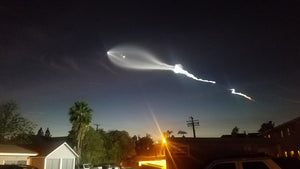February- The Dog Star and Puppis clusters.
Alpha Canis Majoris - Sirius
Sirius the Dog Star is the brightest star in the night sky, visible anywhere on Earth except the far north. It is easily found by following the three stars of Orion’s belt down and towards the south. But did you know that Sirius is also a double star? The companion, Sirius B, also known as the Pup, is a very small star orbiting the primary, and can be seen using even small amateur telescopes. Can you spot it?
M47
The larger and brighter of the two Messier clusters in Puppis, you can pick out M47 with binoculars from most locations. Try scanning 12 degrees east of Sirius when that star is over the southern horizon. With a clear night, you should be able to get both M46 and M47 in the same field of view, with M47 being the brighter patch.
Binoculars can begin to show some of the cluster’s individual stars, while a small telescope at 50x will show the irregularly shaped cluster of about fifty stars of varying brightness, with a close double at the cluster’s center. Larger scopes will also show chains of stars separated by relatively barren areas of fainter stars.
M41
M41 is four degrees below Sirius and in the same binocular field of view. This star cluster is one of the must see objects of the winter sky and a beautiful sight when observed through a telescope.







